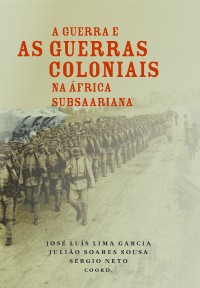Please use this identifier to cite or link to this item:
https://hdl.handle.net/10316.2/46803| DC Field | Value | Language |
|---|---|---|
| dc.contributor.author | Matos, José A. | |
| dc.date.accessioned | 2019-05-24T12:25:54Z | |
| dc.date.accessioned | 2020-09-04T15:35:45Z | - |
| dc.date.available | 2019-05-24T12:25:54Z | |
| dc.date.available | 2020-09-04T15:35:45Z | - |
| dc.date.issued | 2019 | - |
| dc.identifier.isbn | 978-989-26-1632-2 (PDF) | |
| dc.identifier.isbn | 978-989-26-1631-5 | |
| dc.identifier.uri | https://hdl.handle.net/10316.2/46803 | - |
| dc.description.abstract | The evolution of the colonial war in Guinea underwent a dramatic change in 1973–1974, when the guerrillas of the PAIGC (African Party for the Independence of Guinea and Cape Verde) had access to an anti‑aircraft weapon never seen in Africa: the last version of the soviet SA‑7 missile (Strela‑2M). The introduction of this weapon into the theatre of operations in Guinea triggered profound changes in aviation employment and the effectiveness of air operations. Beyond the impact in the Air Force, however, this new weapon also engendered a sense of defeat in the Portuguese military forces. Taking advantage of the new weapon the guerrillas launched several major operations that shook the Portuguese forces provoking changes in the military command itself, including the departure and replacement of General António de Spínola. The escalation of the war also provoked a response from the Lisbon regime, which gambled on continuing the war and strengthening Portuguese military power in the territory. | eng |
| dc.description.abstract | A evolução da guerra colonial na Guiné sofreu uma mudança dramática em 1973–1974, quando os guerrilheiros do PAIGC (Partido Africano da Independência da Guiné e Cabo Verde) tiveram acesso a uma arma antiaérea nunca vista em África: a última versão míssil terra‑ar soviético SA‑7 (Strela‑2M). A introdução desta arma no teatro de operações da Guiné provocou profundas alterações no emprego da aviação e na eficácia das operações aéreas. Além do impacto na Força Aérea, esta nova arma criou também um sentimento de derrota nas forças militares portuguesas. Aproveitando as vantagens da nova arma, os guerrilheiros lançaram várias operações de grande envergadura que abalaram as forças portuguesas provocando mudanças no próprio comando militar em Bissau, incluindo a saída e substituição do general António de Spínola. A escalada da guerra provocou também uma reposta do regime em Lisboa, que apostou na continuação da guerra e no reforço do poder militar português no território. | por |
| dc.language.iso | por | - |
| dc.publisher | Imprensa da Universidade de Coimbra | por |
| dc.relation.ispartof | http://hdl.handle.net/10316.2/46793 | por |
| dc.rights | open access | - |
| dc.subject | Colonial War | eng |
| dc.subject | Guinea | eng |
| dc.subject | Air Force | eng |
| dc.subject | Guerra Colonial | por |
| dc.subject | Guiné | por |
| dc.subject | Força Aérea | por |
| dc.title | A arma que mudou a guerra | por |
| dc.title.alternative | The weapon that changed the war | eng |
| dc.type | bookPart | por |
| uc.publication.firstPage | 221 | - |
| uc.publication.lastPage | 243 | - |
| uc.publication.location | Coimbra | por |
| dc.identifier.doi | 10.14195/978-989-26-1632-2_9 | - |
| uc.publication.digCollection | PB | por |
| uc.publication.orderno | 10 | - |
| uc.publication.area | Artes e Humanidades | por |
| uc.publication.bookTitle | A Guerra e as Guerras Coloniais na África subsaariana | - |
| uc.publication.manifest | https://dl.uc.pt/json/iiif/10316.2/46803/199926/manifest?manifest=/json/iiif/10316.2/46803/199926/manifest | - |
| uc.publication.thumbnail | https://dl.uc.pt/retrieve/10996972 | - |
| uc.publication.parentItemId | 55101 | - |
| uc.itemId | 67988 | - |
| item.grantfulltext | open | - |
| item.fulltext | With Fulltext | - |
| Appears in Collections: | A Guerra e as Guerras Coloniais na África subsaariana | |
Files in This Item:
| File | Description | Size | Format | |
|---|---|---|---|---|
| a_arma_que_mudou_a_guerra.pdf | 2.93 MB | Adobe PDF |  |
Items in DSpace are protected by copyright, with all rights reserved, unless otherwise indicated.
